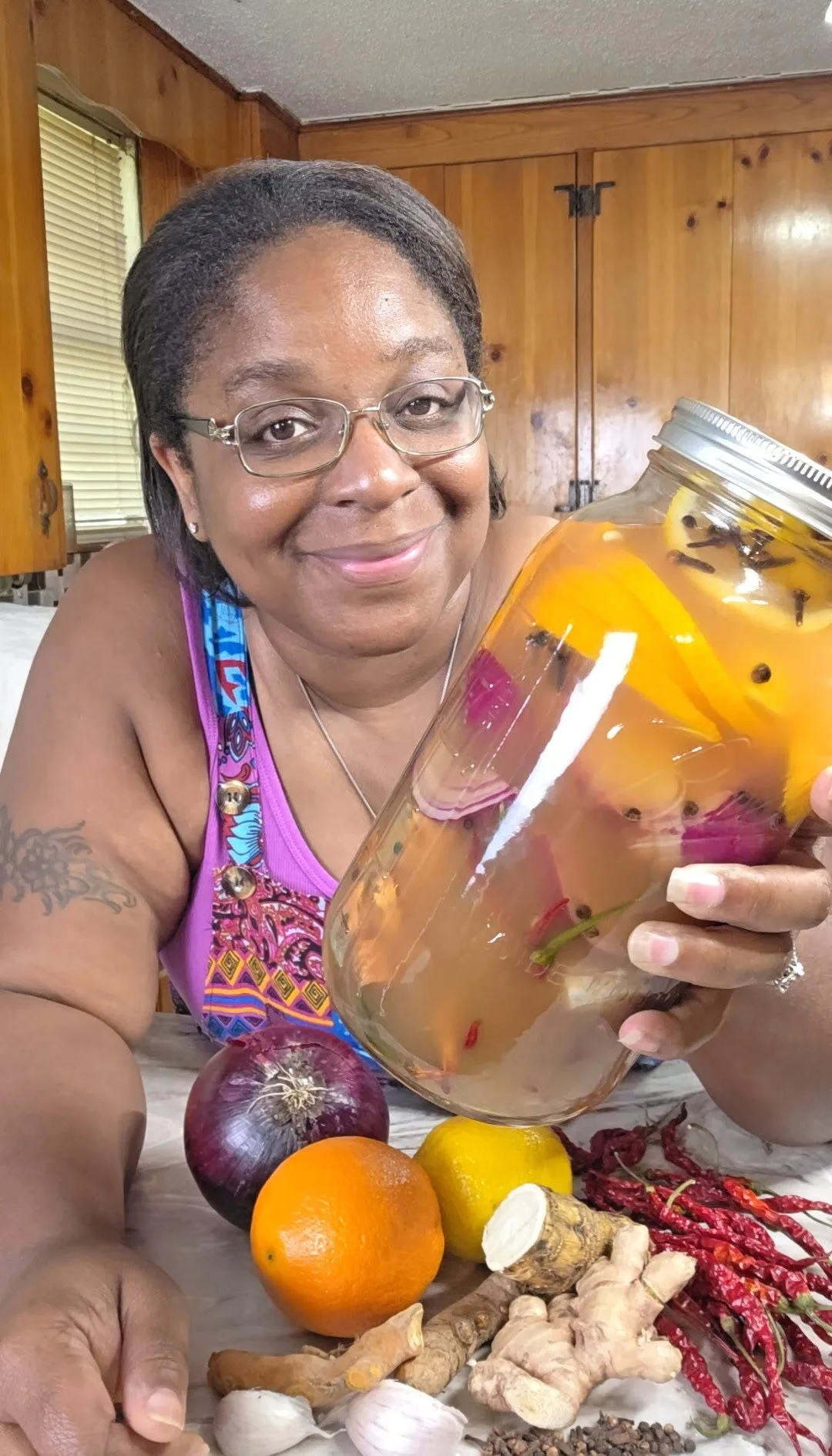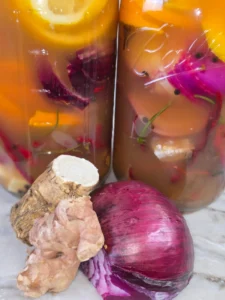If you like your wellness with a little bite, fire cider is your new favorite ritual. This pungent, spicy, tangy folk remedy has been used for decades to support the immune system—especially when the weather turns and everyone around you is coughing.
Below: what it is, why it works, a proven home recipe, and how to use it (without setting your face on fire).
What Is Fire Cider?
Fire cider is an apple-cider-vinegar–based infusion loaded with “fiery” botanicals—think horseradish, onion, garlic, ginger, and hot peppers—then lightly sweetened with honey. After a few weeks of steeping, you’ve got a bold tonic people take by the spoonful or mix into tea, dressings, and shots.
Heads up: While the ingredients have research behind them, there aren’t large-scale clinical trials on fire cider as a finished product. Treat it like a traditional kitchen remedy, not a cure-all.
Why These Ingredients?
- Raw Apple Cider Vinegar (with “the mother”) – Extracts and preserves beneficial compounds; classic digestive support.
- Garlic & Onion – Time-tested kitchen medicine with antimicrobial and anti-inflammatory properties.
- Horseradish – Steamrolls through sinus gunk; promotes circulation.
- Ginger – Anti-inflammatory, antioxidant, and easy on digestion.
- Cayenne or Hot Peppers – Capsaicin brings heat, supports circulation, and helps loosen congestion.
- Honey – Balances the bite, soothes the throat, and turns the infusion into a sippable tonic.
- Smart add-ins (optional) – Turmeric for extra anti-inflammatory support (pair with a crack of black pepper), citrus peel for vitamin C and aroma, herbs like rosemary, thyme, or oregano for flavor and classic winter support.
The Recipe (1 Quart / 4 Cups)
Gear: Clean quart jar with lid, parchment (if using a metal lid), fine strainer, bottle for storage.
Ingredients
- 1 cup yellow onion, finely chopped
- 10 cloves garlic, smashed
- ½ cup fresh horseradish, grated (or ⅓ cup prepared, drained)
- ½ cup fresh ginger, sliced or grated
- 1–2 hot peppers (jalapeño, serrano) sliced, or 1–2 tsp crushed red pepper
- Zest of 1 lemon (and/or orange), optional
- 1 tsp turmeric powder or 1 Tbsp fresh, optional + a few cracks black pepper
- 2–3 sprigs thyme/rosemary/oregano, optional
- Raw apple cider vinegar to fully cover (about 2–3 cups)
- Raw honey, to taste after straining (start with ¼–½ cup)
Method
- Load the jar. Pack all solids in. Don’t smash to a paste—just snug.
- Cover with ACV. Pour vinegar to top; remove air bubbles with a chopstick. Leave ~½ inch headspace.
- Seal. If your lid is metal, place parchment between the lid and vinegar to prevent corrosion.
- Steep. Store in a cool, dark place for 3–4 weeks. Shake daily if you remember.
- Strain. Pour through a fine mesh strainer or cheesecloth; press solids well.
- Sweeten. While the liquid is still slightly warm/room temp, whisk in honey to taste.
- Bottle & chill. Refrigerate. Flavor continues to mellow and bloom.
Yield: About 3–4 cups, depending on how juicy your ingredients were.
Shelf Life: Up to 6–12 months refrigerated. (Vinegar is self-preserving, but honey + kitchen variables = we play it safe.)
How to Use It (Without Regretting It)
- Daily maintenance: 1–2 teaspoons, straight or diluted in water/tea.
- At first sign of “ugh”: 1 tablespoon, up to 3× daily for a day or two.
- In the kitchen:
- Splash into vinaigrettes and slaws
- Stir into brothy soups at the end
- Mix with olive oil for a quick bread dip
- Add a shot to hot water with lemon for a throat-soothing sip
Pro Tip: If you’re new to heat, start with 1 teaspoon and work up. You can always add more; you can’t un-fire your cider.
Flavor Tweaks & Variations
- Golden Fire Cider: Add turmeric + black pepper; expect a warmer, earthy profile.
- Citrus Glow: Add lemon/orange peel and a slice of fresh orange for brightness.
- Herb Garden: Heavy on thyme + rosemary for a piney, wintery vibe.
- No-Honey Version: Skip sweetener or use maple if you need it vegan (strictly speaking, honey turns it into an oxymel, which is a classic vinegar + honey preparation).
Reported Benefits (What People Seek It For)
- Immune Support from garlic, ginger, and vitamin C–rich citrus.
- Anti-Inflammatory Nudge courtesy of ginger and turmeric.
- Digestive Assist from raw ACV.
- Congestion Relief from horseradish and capsaicin’s clear-the-pipes energy.
Reality check: Evidence is strongest for the ingredients individually; there’s no large randomized trial on “fire cider” itself. Use it as part of a bigger wellness picture: sleep, hydration, movement, nutrient-dense meals.
Safety & Common-Sense Notes
- Talk to your clinician if you’re pregnant/nursing, on meds (especially blood thinners or diabetes meds), have ulcers/GERD, or nightshade/allium sensitivities.
- It’s acidic. Rinse your mouth or drink with a straw to be kind to tooth enamel.
- Allergy watch. Hot peppers and horseradish can be intense; adjust to your body.
FAQs
Can kids have fire cider?
Ask your pediatrician first. If approved, go mild (skip hot peppers/horseradish), dilute well, and avoid honey under age 1.
Do I have to use raw ACV?
Raw ACV with “the mother” is traditional for its live cultures; pasteurized works, but you lose the “raw” factor.
I hate horseradish—now what?
Swap in more ginger and a pinch of black pepper. You’ll lose the nasal-clearing hit but keep the warmth.
Why wait 3–4 weeks?
Time lets the vinegar pull out flavors and constituents. You can taste at 2 weeks, but the longer steep rounds out the bite.
Can I reuse the solids?
Yes—blend into a fire cider chutney with a splash of fresh vinegar and honey for a killer sandwich spread. Refrigerate and use within a week.
Quick Label (Copy/Paste)
Fire Cider (Homemade)
Ingredients: Raw apple cider vinegar, onion, garlic, horseradish, ginger, hot pepper, citrus peel, turmeric, herbs, raw honey.
Use: 1–2 tsp daily; up to 1 Tbsp when needed. Dilute if desired.
Store: Refrigerated. Use within 12 months.
Allergens: Allium & nightshade ingredients.
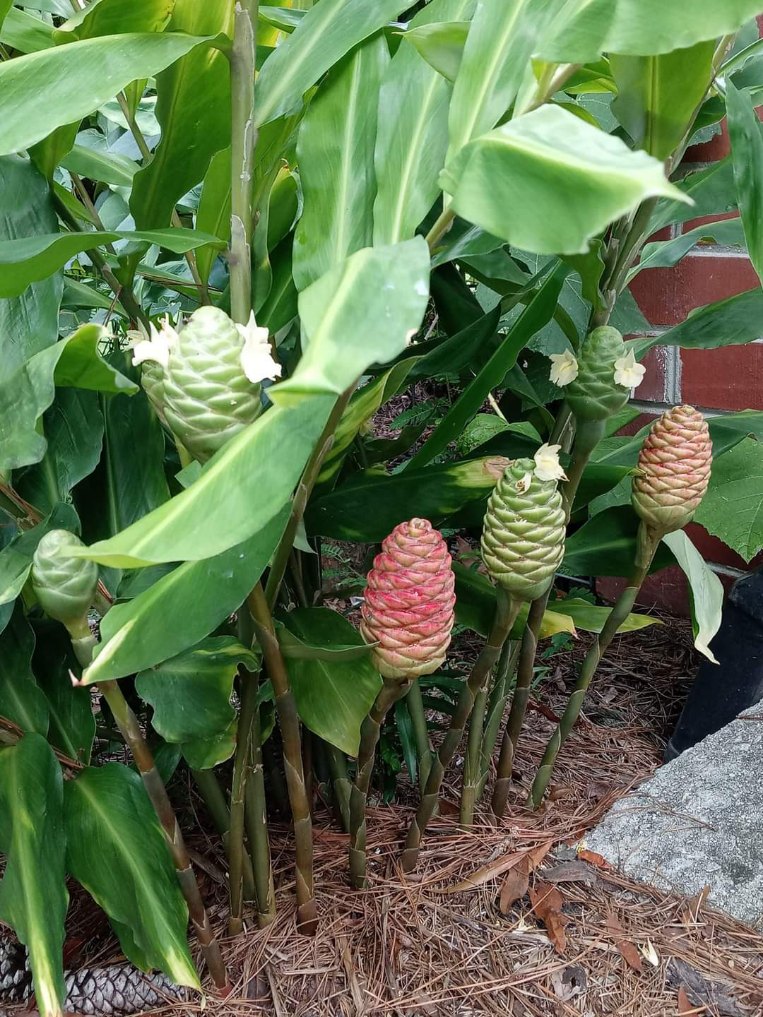


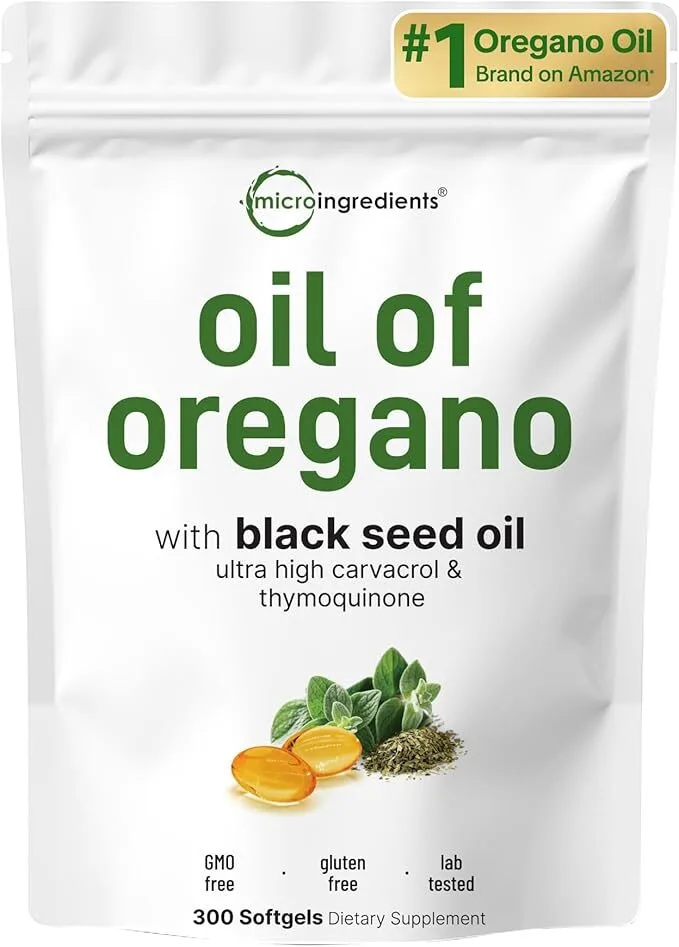
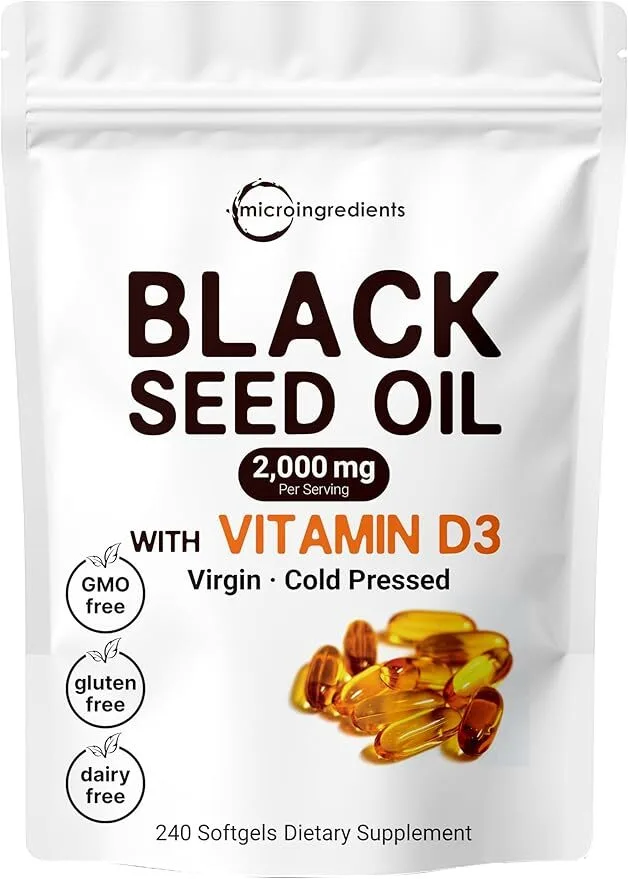
 5 Fall Gardening Tips to Keep Your Garden Thriving
5 Fall Gardening Tips to Keep Your Garden Thriving Fall Is for Growers, Not Quitters
Fall Is for Growers, Not Quitters Clean Up the Garden
Clean Up the Garden It’s cleanup season, y’all.
It’s cleanup season, y’all. Pull out spent plants and weeds.
Pull out spent plants and weeds.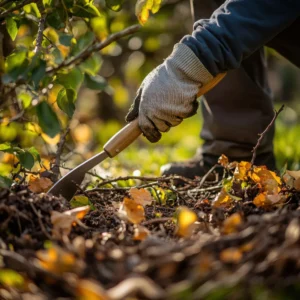
 Black’s Tip:
Black’s Tip: Plant Fall Crops
Plant Fall Crops Cool weather = cool harvests.
Cool weather = cool harvests. Try planting:
Try planting: Mulch for Protection
Mulch for Protection Mulch is your garden’s winter jacket. It locks in warmth, holds moisture, and protects roots from freezing and thawing
Mulch is your garden’s winter jacket. It locks in warmth, holds moisture, and protects roots from freezing and thawing cycles.
cycles. Prune and Trim
Prune and Trim A little pruning now saves a lot of heartbreak later.
A little pruning now saves a lot of heartbreak later.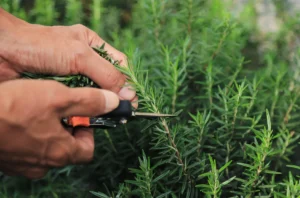 What to Do:
What to Do: Prepare the Soil for Next Year
Prepare the Soil for Next Year Healthy soil = a healthy garden. Fall is your chance to build that foundation.
Healthy soil = a healthy garden. Fall is your chance to build that foundation. Bobby’s Soil Routine:
Bobby’s Soil Routine: Final Word
Final Word
 Featured Products
Featured Products





